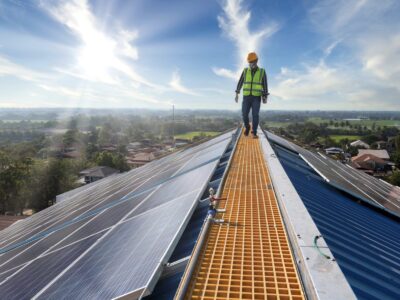Hawaii started 2023 with a commitment to clean energy production. In 2020, the state legislature passed a law banning the use of coal for energy beginning on Jan. 1, 2023. The move is a part of the island chains’ mandate to transition to fully renewable energy by 2045.
It’s a significant shift for The Aloha State, which was using oil for two-thirds of its energy just two years ago. Oahu’s massive AES Corporation coal plant closed in September 2022 after 30 years in compliance with new regulations. It was once responsible for a fifth of the electricity on that island. The company is now sourcing the bulk of its energy from clean solar plants.

“It really is about reducing greenhouse gases,” said Hawaii Gov. David Ige to the Associated Press. “And [that] coal facility is one of the largest emitters. Taking it offline means that we’ll stop the 1.5 million metric tons of greenhouse gases that were emitted annually.”
Hawaii is the first state to entirely ban coal, though others — including California, Maine, Oregon, and Texas — have passed similar restrictions.
Currently, it gets nearly half of its power from clean sources such as solar, wind, geothermal, and hydroelectric. Much of the other half comes from more costly oil, which is only slightly less polluting than coal.
The state will have a transition period as it moves from that oil over to clean sources. However, there is concern that, due to the price of oil, the switch to cleaner energy solutions may increase electricity bills for Hawaii residents, who already have some of the highest cost of living in America.
The sources that will eventually replace all the coal and oil energy have also been delayed getting online due to supply chain problems, contract issues, and permit delays. There’s currently a debate on who should shoulder the additional cost during this time.

“The fact that Hawaii’s families are already doing what is necessary to reduce their energy uses while still paying the most in the nation for household electricity is unsustainable,” said State Sen. Kurt Fevella. “While I believe utility companies … can do more to reduce the energy burden passed on to Hawaii’s ratepayers, I also believe developers of renewable energy projects should also bear a greater portion of the transmission costs.”
When the transition to fully-renewable energy is complete, Hawaii expects cleaner energy will be a big weapon in the fight against climate change. Like other Pacific islands, it is feeling huge effects from recent climate shifts, including sea level rise, more intense storms, wildfires, droughts, and coral reef destruction. The state is clearly on the way to a more sustainable, affordable, and healthy future.

“Renewables are getting cheaper by the day,” said Leonardo Moreno, president of AES Corporation’s Clean Energy Division. “I envision a future where energy is very, very cheap, abundant, and renewable.”





